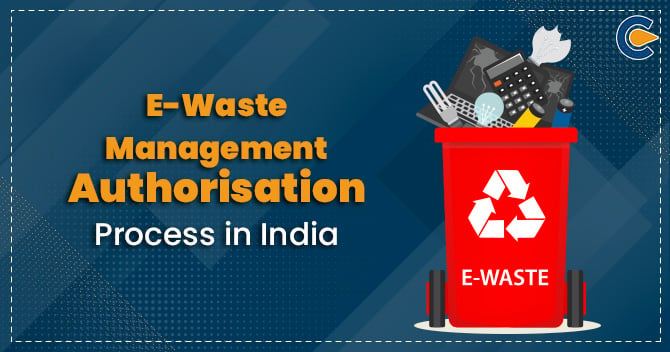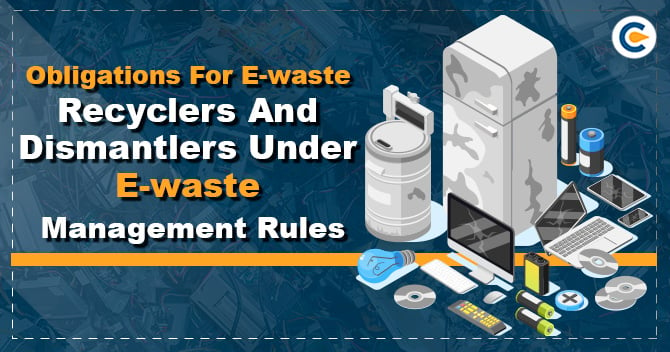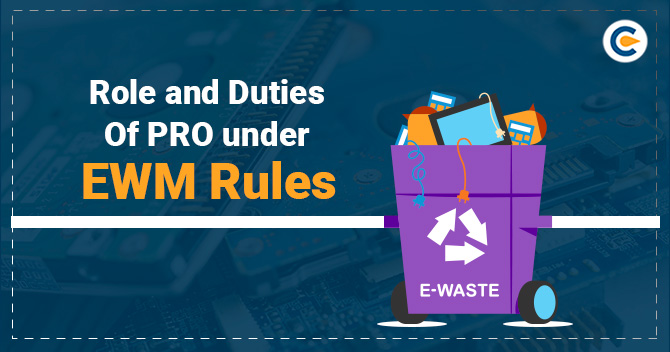The rules of e-waste apply to every manufacturer, bulk consumer, dealer, retailer, dismantler, producer, and collection centres, and recycler involved in manufacturing, sale, transfer, purchase, collection, storage & processing of e-waste. Scroll down to check the E-Waste Management Authorisation Process.
Electronic equipment listed in schedule one comprising their components consumable spots & spares which make the product working but shall not apply to:
- Micro-enterprises as mentioned in the MSME Development Act, 2006 27 of 2006;
- Used lead-acid batteries as covered under the Batteries Management & Handling Rules, 2001 made under the Act;
- Radioactive wastes as cited under the provisions of the Atomic Energy Act, 1932 and Rules made thereunder.
E-Waste Management Rules, 2016 was informed by the Ministry of Environment Forests & Climate change on the 23rd March 2016, which are effective from 1st October 2016. As per Rules, every producer of electrical & electronic equipment is listed in the schedule:
- One can apply for EPR and obtain authorisation from CPC and maintain records and shall find returns;
- Recycler or dismantler can obtain authorisation from the concerned SPBC or State Pollution Board Committee, but according to the huge master plan of Delhi 2021, recycling is not allowed in NCT of Delhi;
- Recycling & dismantling of e-waste is not allowed in the NCT of Delhi; as of now, refurbishment of e-waste only can apply in Form-1 and obtain authorisation from DPCC.
What is E-Waste?
Before we discuss the E-Waste Management Authorisation Process, let’s understand the meaning of E-Waste. E-waste is a type of waste generated from discarded obsolete electronic parts or products like televisions, computers, cell phones, a piece of a motherboard, etc. E-Waste can be highly harmful as it can lead to different harmful diseases due to coming in direct contact with several dangerous chemicals like chromium, PBC (Polychlorinated Biphenyls)[1] , inhalations of toxic fumes, or from accumulations in the water, food, or soil. Major sources of e-waste comprise wastes from houses, IT companies, and improper disposal of electronic & connected parts from any other such sources.
An Overview of E-Waste Management
E-Waste Management & Handling Rules, 2011 has been informed by more EPS; this rule will be effective from 1st May 2012. Two categories of electrical & electronic equipment, namely information.
Telecommunication and technology equipment have been covered under this rule for lessening the hazardous substance in the electronic components; the rules specify a maximum concentration value of 0.1% by weight in homogeneous materials for lead, chromium, lead, mercury, polybrominated biphenyl openly dominated diphenyl ethers & o.01% by weight in homogenous materials for cadmium generators of e-waste have to dispose of this wastes only to register to recyclers who have environmentally sound facilities for recycling of e-waste presently 47 recyclers have been registered across the country by various SPCB for recycling of e-waste.
Documents Required for E-Waste Management Authorisation Process
Following are some documents required for E-Waste Management Authorisation Process:
- Full address and name;
- Contact person with designation and contact details like telephone, fax number, and email;
- Authorisation required for:
- Treatment, if any;
- Refurbishing;
- Generation at the time of manufacturing or refurbishing;
- Collection transportation storage.
- E-wastes information:
- Total quantity erased generated in MT or A;
- Quantity sent for disposal;
- Quantity for disposal;
- Quantity refurbished (applicable to refurbisher).
- Details facilities for storage handling and treatment refurbishing.
In case of authorisation renewal, previous authorisation no and date & details of annual returns.
E-Waste Management Authorisation Process – How to Apply?
Following is the E-Waste Management Authorisation Process:
- Download the Form-1 application of E-Waste Management Rule, 2016;
- Create a complete Waste Management Plan along with a channelisation system for targeted collection;
- Selling of application Form-1 of E-Waste Management Rules, 2016.
Conclusion
Electrical & electronic equipment amount to a huge amount of metals. If there is recycling via e-waste management, then it can be translated into important metal demand. E-Waste Management helps in the proper processing of the electronic devices so as to ensure that the harmful materials are not released into the environment.
Read our Article:How to get EPR (e-waste) Authorization?











